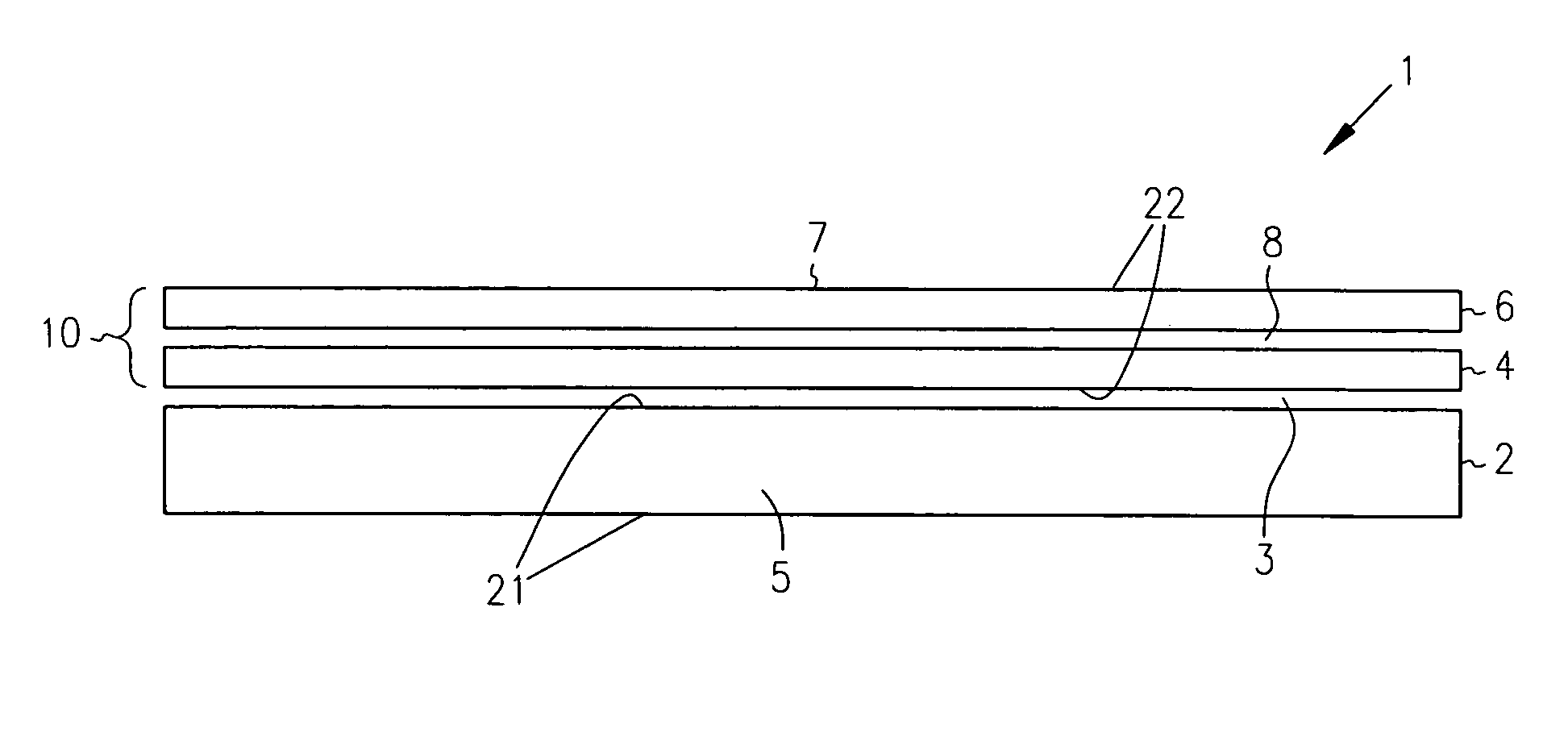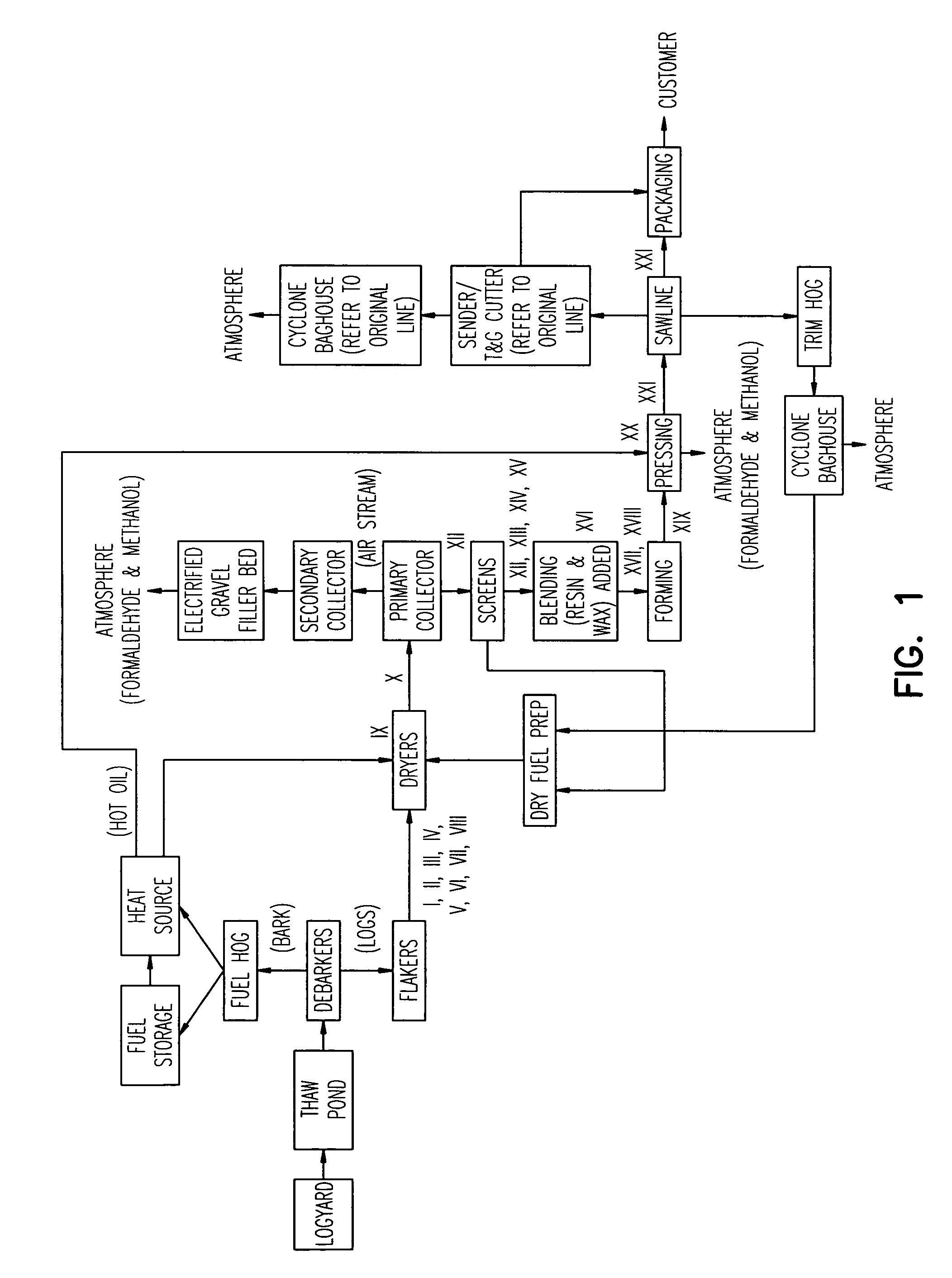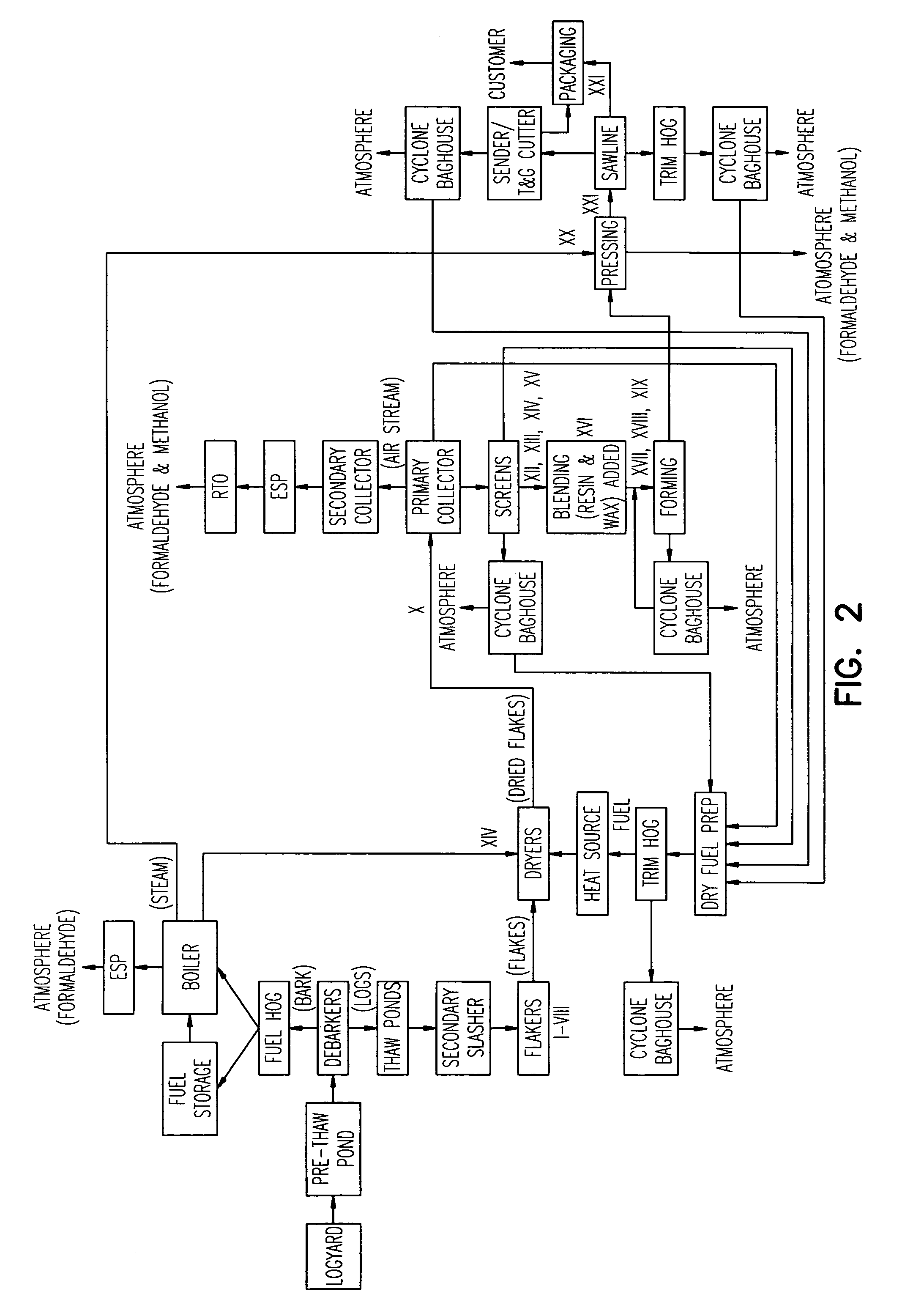Method for manufacturing wood-based composite panel having foil overlay
a technology of wood-based composite panels and overlays, which is applied in the directions of heat-proofing, adhesive processes with surface pretreatment, and other domestic objects, etc., can solve the problems of increasing the temperature inside the dwelling, homeowner's severe discomfort, and high price for installing and operating air conditioning
- Summary
- Abstract
- Description
- Claims
- Application Information
AI Technical Summary
Benefits of technology
Problems solved by technology
Method used
Image
Examples
Embodiment Construction
[0034]The present invention provides a radiant barrier wood-based composite panel and a methods of manufacturing the same. The radiant barrier wood-based composite panel includes a radiant barrier material that retains its radiant barrier properties (i.e., emissivity) during the manufacturing of the radiant barrier wood-based composite panel. The radiant barrier wood-based composite panel includes radiant barrier material that retains its radiant barrier properties over the extended periods of time typically encountered with the lifespan of the radiant barrier wood-based composite panel. The radiant barrier wood-based composite panel includes a resin that retains its adhesiveness during the manufacturing of the radiant barrier wood-based composite panel. During the manufacture of the radiant barrier wood-based composite panel, the radiant barrier material retains its radiant barrier properties in the presence of the resin. Additionally, each of the resins employed can effectively cu...
PUM
| Property | Measurement | Unit |
|---|---|---|
| Temperature | aaaaa | aaaaa |
| Temperature | aaaaa | aaaaa |
| Temperature | aaaaa | aaaaa |
Abstract
Description
Claims
Application Information
 Login to View More
Login to View More - R&D
- Intellectual Property
- Life Sciences
- Materials
- Tech Scout
- Unparalleled Data Quality
- Higher Quality Content
- 60% Fewer Hallucinations
Browse by: Latest US Patents, China's latest patents, Technical Efficacy Thesaurus, Application Domain, Technology Topic, Popular Technical Reports.
© 2025 PatSnap. All rights reserved.Legal|Privacy policy|Modern Slavery Act Transparency Statement|Sitemap|About US| Contact US: help@patsnap.com



